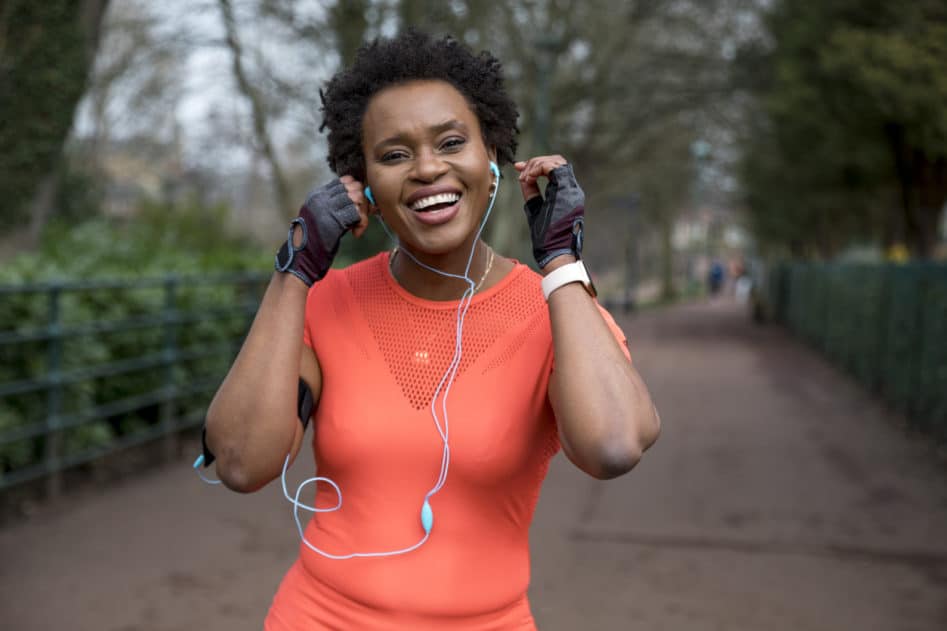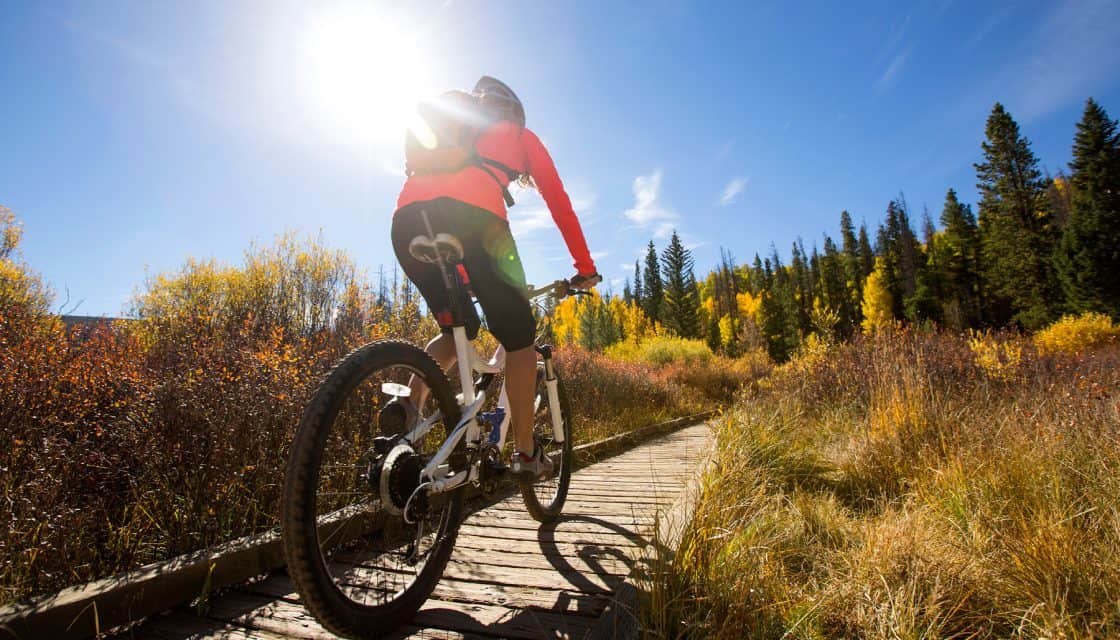Well-being|April 1, 2024
Active Aging: Mastering Longevity with Recreational Sports
Written by: Sara Youngblood Gregory
Share

Well-being|April 1, 2024
Written by: Sara Youngblood Gregory
Share

By now, most people know the drill. To maintain your health and live a long life, it’s important to eat well, practice good sleep hygiene, quit smoking and of course get plenty of movement in your day-to-day life. But motivating yourself to be more physically active can be particularly challenging for many people — especially for older adults, who may also have chronic conditions that limit mobility.
For many, engaging with a recreational sport — rather than facing a dreaded trip to the gym, for example — provides the perfect opportunity for consistent activity, stress relief and social connection. Not only does this type of physical activity help you feel good in the moment, it may actually help increase your lifespan.
“Without question, lifestyle factors like exercise are absolutely fundamental to regulating, controlling and affecting the biology of aging, both in terms of how quickly aging advances and how we can develop defense mechanisms against it,” says Nathan K. LeBrasseur, Ph.D.,
M.S., director of Mayo Clinic’s Robert and Arlene Kogod Center on Aging and co-author of the Mayo Clinic Press book “Mayo Clinic on Healthy Aging.”
Below, Dr. LeBrasseur breaks down exactly how recreational sports can impact longevity.

To understand the link between exercise and longevity, it’s important to first take a step back and think about how aging impacts the body. After you hit age 30, many basic bodily functions begin to decline — usually by about 1% to 2% every year.
Often, getting older can make people more vulnerable to age-related conditions like Alzheimer’s, diabetes, some cancers, kidney disease and osteoporosis, says Dr. LeBrasseur. “We don’t worry about many of these conditions in our 20s or 30s, but we start to witness them in later life, typically in our 50s and 60s.”
Aging is a normal, inevitable part of life — there’s simply no way to stop it altogether. But exercise has been shown to slow the body’s natural decline from 1% to 2% to about half a percent every year. Though this may seem like a small decrease, over time this can have a big impact. Researchers have found that sedentary people lose about 70% of their functional ability by age 90. Those who exercise regularly lose only 30% of their functional ability by the same age.
According to Dr. LeBrasseur, exercise not only helps you feel good and maintain quality of life, it can help keep you younger at the cellular level too.
“Exercise can actually counter some of the wear and tear and degradation that happens in the cells,” he says. “Exercise can turn on the ‘garbage disposal’ in our bodies to recycle old and damaged things.”
For example, physical activity can stop or reduce the circulation of certain inflammatory compounds in the body like interleukins and cytokines, which lead to damaged arteries and higher blood pressure.
In short, exercise can have a powerful influence over the aging process, and as a result, chronic disease, disability and lifespan.
“When you think about the leading causes of death in developed countries, like heart disease and stroke, exercise is one of our most powerful tools to counter those conditions and promote healthspan, our healthy active years of life,” says Dr. LeBrasseur.
“Exercise is, in a way, a miracle drug because it has so many different benefits associated with it,” says Dr. LeBrasseur.
Perhaps unsurprisingly, regular exercise also has been shown to reduce and even prevent many health conditions.
Critically, physical activity can promote muscle and bone health, which is especially important as you age. Over time, muscles lose their tone and elasticity, and low muscle quality often contributes to frailty in older adults as well as falls, hospitalization and disability. Regular exercise not only slows the loss of muscle mass, but also increases muscle strength and protects against limitations in physical function. Research indicates that physical activity may keep your immune system strong. In a study of recreational cyclists ages 55 to 79, researchers found that their immune systems had not degenerated as much as inactive older adults — which may enable them to better respond to challenges such as respiratory infections like COVID and influenza.
Exercise provides mental health and cognitive benefits as well. Physical activity can boost mental well-being by reducing stress and anxiety, enhancing mood, improving sleep, and combating symptoms of depression.
Even more impressive? Research indicates that moderate-to-intense exercise may help maintain the brain’s function as you age. In one study, researchers tracked the cognitive function of two groups of people — those who didn’t exercise much or at all, and those who did. Over time, the more sedentary group had a bigger decrease in episodic memory, which is the ability to recall details from an event you personally experienced, such as what you ordered for dinner last night. Researchers found that the difference between the two groups was equal to 10 years of aging.
While there is no one best recreational sport, there are a few factors to keep in mind.
First and foremost, Dr. LeBrasseur says it’s important to get a mix of aerobic exercise and resistance training. Aerobic exercise — for example brisk walking, cycling, pickleball — will get your heart rate up and help prevent cardiovascular diseases, says Dr. LeBrasseur. Meanwhile, resistance training — like yoga or strength exercises like pushups — helps maintain your muscle mass and improve functional ability.
There are any number of exercises, classes, or at-home workout routines that give a blend of both aerobic and resistance training — and studies suggest that higher levels of physical activity in general can reduce risk of death. But there is some evidence that the type of sport may impact longevity. In one study, 8,577 participants were monitored for up to 25 years to study the impact of various recreational activities on life expectancy. The sports
most associated with increased longevity were tennis, badminton, soccer and cycling. Notably, the sports that featured more social interaction were associated with greater longevity.
Not only can social connectedness increase the fun, having a workout buddy or team practice can keep you consistent. In fact, one study found that older adults involved in sports teams or exercise groups were not only more likely to sustain physical exercise, but also more likely to be alive 14 years later.
For adults age 65 and older, the CDC recommends 150 minutes of moderate physical activity a week (which breaks down to about 20 minutes every day) or 75 minutes of vigorous physical activity a week. Ideally, you also should do some strength training — like yoga, gardening or lifting weights — at least twice a week, in addition to exercises that improve balance. (6)
If you’re motivated to join a class or sports group but feel concerned about how you’ll handle a shift in activity level, Dr. LeBrasseur recommends planning a visit with your healthcare provider or seeking the support of a physical therapist.
But the key, according to Dr. LeBrasseur, is consistency.
“Think of the long game,” he says, “What gets you out and moving not just today, but what keeps you going for the next year?”